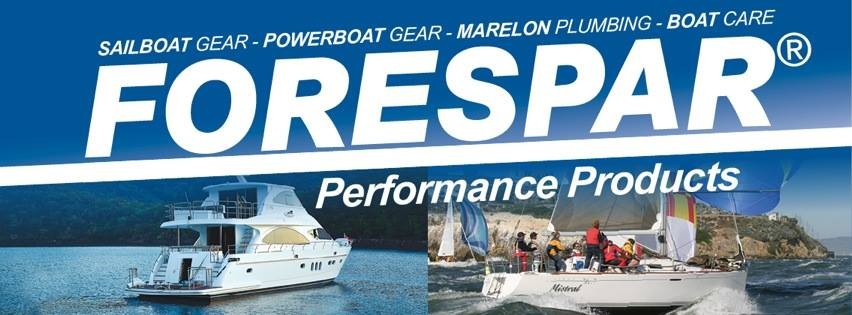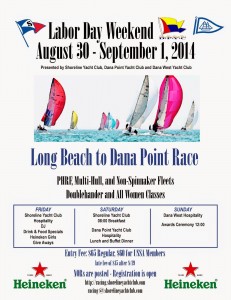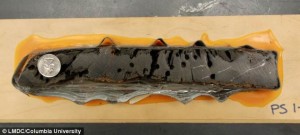Forespar's Point of View
Blogging About Life on the Water
Come visit Forespar at the Annapolis Boat Show!
Come visit the staff from Forespar at the Annapolis Sailboat show next week. The Annapolis sailboat show is the oldest and largest all sailboat show in the United States. It is an in the water sailboat show held at the City docks in downtown historic Annapolis, MD in the shadows of the United States Naval Academy. In addition to the show Annapolis is filled with wonderful restaurants. boat yards and water based activities. Come join us in Tent C, booths 67-73. We will be displaying our new Quik Davits, Leisure Furl booms, Boat Care Products and more. For more information and to purchase tickets go to:
http://www.annapolisboatshows.com/united-states-sailboat-show/
The A Sail
The modern asymmetrical headsail, in all its design variation, is a very popular and versatile sail. Today, a great many cruisers and club racers carry them. The sail in its original form was set off the long sprits of Aussie 18 skiffs to power their little rocket ships to impressive speeds, and from there, the sails were adopted to the planing sport boats and again set from sprits. In time, displacement hull cruising boat owners began to see the benefits of easy handling during off wind sailing, and the overall popularity of asymmetricals took off.
The important thing to note here is that the typical cruiser or cruiser/racer is not a planing sport boat, and the hull form does not reach downwind like as such. Thus, for better performance and sailing downwind angles of greater than approximately 135 degrees apparent, and even dead downwind, the right solution is setting a light weight fixed or telescoping pole. This way, the real versatility of these sails is achieved.
While these sails were originally marketed to cruisers and cruiser/racers as “pole less” sails, today there is a changing trend toward the use of poles to round out the full value of the asymmetrical.
Forespar has a family of fixed and telescopic poles in aluminum and carbon fiber. If a boat owner makes a choice of a fixed pole, using a pole 15% over the boat’s J dimension works well. Poles can be stowed on deck, on the mast or on the lifeline and Forespar offers gear to do it all.
5 Reasons You Should Use a Whisker Pole
1. You Can Sail Deeper Angles:
A whisker pole allows you to sail deeper angles downwind because it keeps the jib from collapsing and keeps it from being backfilled by the main. Additionally, a whisker pole allows you to sail wing-on-wing and increases downwind performance.
2. You Can Sail Faster:
An article in the September 2014 edition of Sail Magazine stated that “a poled-out A-sail pulls like a train.” Enough said.
3. Increases Sail Area:
A whisker pole increases sail area and pulls the headsail in front of the main. This allows clean air to power the headsail and keeps the jib from collapsing due to back filling.
4. Improved Performance with an Asymmetric Spinnaker:
Many people are not aware that sail manufacturers recommend the use of a whisker pole with asymmetric spinnakers when sailing dead downwind. The pole can be placed on either the windward side attaching to the tack or on the leeward side attaching to the clew. This pulls the A-sail in front of the main and allows you to sail dead downwind. Without a whisker pole, you’re stuck gybing to your mark.
5. Makes Cruising More Enjoyable:
Whisker poles improve the cruising experience in a number of ways. The pole keeps the jib from flopping and being back filled by the main. This results in a more comfortable ride and better boat handling. Additionally, with a whisker pole you can “set it and forget it”, allowing you to sail dead downwind with minimal effort because you do not have to constantly gybe. For the dedicated sailor, this greatly enhances your cruising experience.
Check out our whisker poles here: http://www.forespar.com/whisker-poles.shtml
Leisure Furls at Newport Int’l Boat Show
Forespar’s Leisure Furl in-boom furling and reefing system is being displayed at the Newport International Boatshow which opens today in historic Newport, Rhode Island. Four boats equipped with Forespar’s Leisure Furl are being displayed plus the Forespar booth has a working display to see and examine. The boatshow runs today through Sunday, September 14.
Forespar’s is introducing its’ new Leisure Furl Voyagers group at this year’s Annapolis Boatshow. The show runs October 9 – 13 and is the largest sailboat show in the USA. The Leisure Furl Voyagers celebrate those most actively sailing their Leisure Furl equipped yachts. With various mileage award levels from 1,000 miles sailed to over 25,000 miles, the Leisure Furl Voyagers celebrate Leisure Furl sailors of all experience levels. Join us at the Forespar booth in Tent C to find out more or email Alan Massey a t alanm@forespar.com for more information.


Long Beach to Dana Point Race
Attention Southern California PHRF racers! It’s time – once again – for the Long Beach to Dana Point Race. This 39 mile course for PHRF Classes and a shorter course for the Cruising Class is lots of fun for you and your crew! A great race to celebrate the end of summer with your family. 
A Great Finish to DPYC’s ‘Thirsty Thursdays’ Summer Series
Thursday evening marked the end of Dana Point Yacht Club’s weekly ‘Thirsty Thursday’ race series. With the large swells and strong wind from Hurricane Marie, the sailing did not disappoint and provided an excellent final race for the 18 race series.
The wind was blowing hard out of the North, gusting up to 15 mph. The Catalina 30 ‘Bon Vivant’ I was racing on competed against two J 24’s, ‘Superstrings’ and ‘Whasabe 2’, and a Santana 30, the ‘Amancer de la Libertad’ in the PHRF-C class. Although only a few boats in our class showed up, the racing proved to be exciting.
Tacking back and forth, we managed to get a good upwind position on the line, and crossed the pin a couple of seconds after the start gun. We made our way to the first mark close hauled on a westerly heading. It was a close battle between the two J 24’s all the way. Fighting for every inch, we soon paralleled Super Strings. Being windward, we avoided being pushed off by the leeward Superstrings. We were the first boat to reach the mark with a good distance between the other two boats.
As we rounded the mark, I set our Forespar whisker pole so that we would have the advantage sailing down wind on a southerly heading. Extending the pole, I was able to dramatically increase our genoa sail area. Additionally, we were able to sail wing-on-wing because we had deployed our pole. Neither of the other J 24’s used a pole, and could not sail wing-on-wing and their genoas were being back filled by the main. Their genoas could not stay nearly as open and catch as much wind as ours could. We soon increased our lead over the other boats because we used our whisker pole.
Once we rounded the downwind mark, we made our way back to the first mark. We were still in first for a good majority of that leg. However, Superstrings made the decision to tack up and then back down to the mark, while we decided to hold our heading. With this move, Superstrings was able to maneuver themselves into first place. We rounded the mark and then made our way on a beam reach to the Dana Point harbor breakwater.
As soon as we entered the harbor, we experienced strong gusts and surges. This was last leg of the race, where we would have to tack up the channel and cross the point where the Dana Point Yacht Club is located. The next 10 minutes we constantly tacked while sailing close hauled. This was the most exciting part of the race because of the constant tacking. As we approached the finish line, we avoided hitting the sandbar, which the Flying Tiger 10 ‘Ruckus’ had done. We crossed the line in second place with a corrected time of only 29 seconds behind Superstrings. Whasabe 2 finished five minutes behind us. The Amancer de la Libertad did not finish the race (probably because they missed their start time and went with the wrong group). Taking second place was a great result and an exciting way to finish of the summer sailing series.
Baby (Seal) on Board
Check out this incredible video of a baby seal climbing on this surfer’s board!
The Charles W. Morgan Returns Home!

“Taking this American icon, the oldest surviving commercial ship in the country, out on her 38th voyage was a landmark achievement for Mystic Seaport,” said seaport president Steve White. “We truly accomplished our mission to celebrate our nation’s shared maritime heritage.” (NBC)
The Morgan embarked on its very first voyage in the year 1841. America’s oldest commercial whaling ship, the Morgan played a vital role in American maritime history. On August 6th, she returned home to Mystic Seaport in Connecticut to a warm welcome celebration.
Old Ship Found Buried Under Old Twin Towers

The recently reported story making headlines discusses the discovery of an old ship which was found at the excavation site of the 9/11 Twin Towers. Although the discovery was made four years ago, scientists have recently reached an explanation for the mysterious find.

Discovered 22 feet below street level, the Hudson River Sloop was constructed from what scientists believe is the same white oak tree wood that was used to build Independence Hall in Philadelphia. The rings in the wood suggest that it was cut from the white oak trees in 1773, just two years before the Revolutionary War.
Photos courtesy of Dailymail.co.uk
Happy 4th of July!
“We must be free not because we claim freedom, but because we practice it.” -William Faulkner

Happy 4th of July to everyone!
